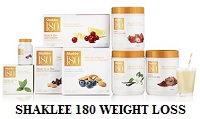|
 Burning fat effectively and quickly involves a combination of diet, exercise, and lifestyle changes. It's important to approach this with a focus on sustainable, healthy habits rather than quick fixes, which can often be unhealthy and lead to rebound weight gain.
Burning fat effectively and quickly involves a combination of diet, exercise, and lifestyle changes. It's important to approach this with a focus on sustainable, healthy habits rather than quick fixes, which can often be unhealthy and lead to rebound weight gain.
Here's a comprehensive breakdown of how to burn fat effectively:
1. Create a Calorie Deficit
The fundamental principle of fat loss is consuming fewer calories than you burn. This forces your body to use its stored fat for energy.
- Healthy Eating:** Focus on a diet rich in whole foods, including fruits, vegetables, whole grains, lean proteins, and healthy fats. These foods are generally low in calories and high in nutrients and fiber, which helps you feel full longer.
- Control Portions:** Use smaller plates and measure ingredients to help manage portion sizes.
- Limit Processed Foods:** Reduce your intake of sugary drinks, refined carbohydrates, and foods high in saturated and trans fats.
2. Incorporate a Variety of Exercises
A balanced exercise plan that includes both aerobic and strength training is most effective for fat loss.
- Aerobic Exercise (Cardio):** This type of exercise raises your heart rate and burns calories. Aim for at least 150 minutes of moderate-intensity aerobic activity per week, such as brisk walking, running, swimming, or cycling.
- High-Intensity Interval Training (HIIT):** HIIT involves short bursts of intense exercise followed by brief recovery periods. Studies show that HIIT can significantly reduce total fat mass, including stubborn visceral fat, and continues to burn calories even after the workout is over (a phenomenon known as EPOC, or "afterburn").
- Strength Training:** Building muscle is crucial for fat loss. Muscle tissue burns more calories at rest than fat tissue does, which helps increase your metabolism. Incorporate full-body resistance workouts 2-4 times per week, using weights, resistance bands, or your own body weight.
3. Focus on Key Macronutrients
- Protein:** A high-protein diet is an effective way to reduce appetite and boost your metabolism. Protein helps you feel full, reduces hunger hormones, and helps preserve muscle mass while you're in a calorie deficit. Include sources like lean meats, seafood, eggs, legumes, and dairy.
- Fiber:** High-fiber foods, such as vegetables, fruits, and whole grains, add volume to your meals and take longer to digest, helping you feel satisfied on fewer calories.
4. Lifestyle Factors
Beyond diet and exercise, other factors play a significant role in fat loss.
- Get Enough Sleep:** Poor sleep and high stress levels can increase the stress hormone cortisol, which is linked to storing belly fat. Aim for at least 7 hours of quality sleep per night.
- Manage Stress:** Find healthy ways to cope with stress, such as mindfulness, meditation, or gentle exercise like yoga.
- Stay Hydrated:** Drinking plenty of water can help with feelings of fullness and is essential for overall health.
Important Considerations:
- Spot Reduction is a Myth:** It's impossible to "spot-reduce" fat from a specific area of your body by exercising that body part alone. Fat is lost from all over your body in response to a calorie deficit.
- Consistency is Key:** Rapid fat loss is often unsustainable and can lead to a loss of muscle and water, not just fat. For lasting results, focus on making small, consistent changes to your diet and exercise habits over time.
- Consult a Professional:** Before starting any new diet or exercise program, it's a good idea to consult with a doctor or a registered dietitian, especially if you have underlying health conditions.
|
